Most Indians today are well aware of the two famous ancient universities of India which also are one of the oldest universities in the world – Takshashila University (Taxila) and Nalanda. But are these the only knowledge centers that existed in ancient India?
Education has always been given great prominence in Indian society since the times of the vedic civilization, with gurukul and ashrams being the centers of learning. And with evolving times, a large number of centers of learning were established across ancient India of which Takshashila and Nalanda are the most famous ones known today.
Below is a list of major ancient universities that flourished across ancient India.
Takshashila University
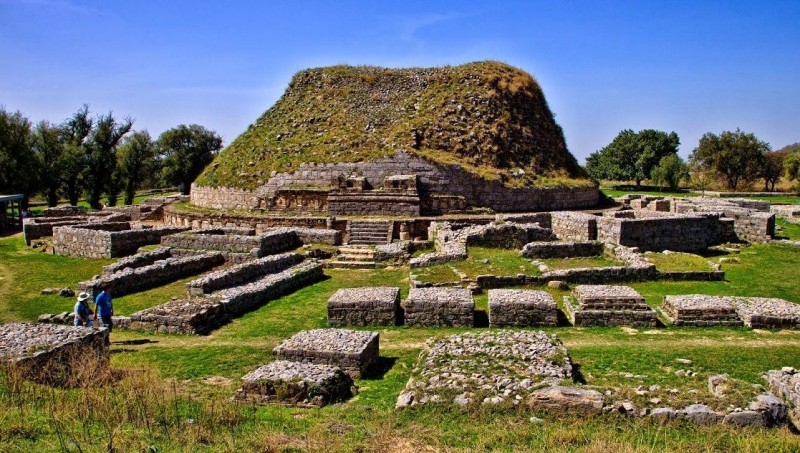
Taxila as it is called today, Takshashila University established around 2700 years ago was home to over 10500 students where the students from all across the world used to come to attain specialization in over 64 different fields of study like vedas, grammar, philosophy, ayurveda, agriculture, surgery, politics, archery, warfare, astronomy, commerce, futurology, music, dance, etc.
Taxila is also described in some detail in the Buddhist Jātaka tales, written in Sri Lanka around the 5th century. In this text, Taxila has been mentioned as the capital of the kingdom of Gandhara and a great learning center. Chinese travellers like Fa Hian (Faxain) and Huien Tsang (XuanZang) also speak of Takshashila in their writings.
Famous graduates of this University include the ones like Chanakya, Panini, Charaka, Vishnu Sharma, Jivaka etc. This is the world’s oldest university.
Nalanda University
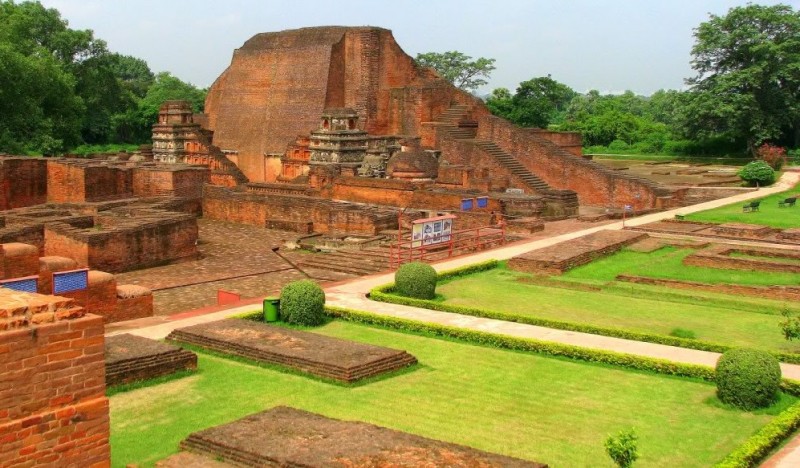
Nalanda University was established by Shakraditya of Gupta dynasty in modern Bihar during early 5th century and flourished for 600 years till 12th century. Nalanda was the world’s first university to have residential quarters for both students and teachers. It also had large public lecture halls. Students from countries like Korea, Japan, China, Tibet, Indonesia, Persia and Turkey came to study in this university. Nalanda University was set on fire by Turkish Muslim army under Bakhtiyar Khilji in 1193.
The great library of Nalanda University was destroyed, ransacked and burnt by the soldiers of Khilji’s army and it is said that it was so vast that the manuscripts kept burning for three months. In-numerous number of ancient Indian manuscripts carefully preserved for thousands of years were destroyed in this fire. Thousands of monks in the University were burnt alive and beheaded by Khilji’s army.
In 2010, the parliament of India passed a bill approving the plans to restore the ancient Nalanda University as a modern Nalanda International University dedicated for post-graduate research. Many east asian countries including China, Singapore and Japan have come forward to fund the construction of this revived Nalanda University.
Pushpagiri University
Pushpagiri University was established in ancient Kalinga kingdom (modern day Odisha) and was spread across Cuttack and Jajpur districts. It was established in 3rd century and flourished for the next 800 years till 11th century. The university campus was spread across three adjoining hills – Lalitgiri, Ratnagiri and Udayagiri. This was one of the most prominent centers of higher education in ancient India along with the universities of Takshashila, Nalanda and Vikramashila.
The Chinese traveler Xuanzang (Huien Tsang) visited this university in 639 CE. Lalitgiri is said to have been commissioned by early 2nd century BCE itself and is the oldest Buddhist establishments in the world. Recently a few images of Emperor Ashoka have been discovered here, and it has been suggested that the Pushpagiri University was established by Emperor Ashoka himself.
Valabhi University
Valabhi University was established in Saurashtra of modern Gujarat at around 6th century and it flourished for 600 years till 12th century. Chinese traveler Itsing who visited this university during the 7th century describes it as a great center of learning. Gunamati and Sthiramati, the two famous Buddhist scholars are said to have graduated from this University.
This University was popular for its training in secular subjects and students from all over the country came to study in this University. Because of its high quality of education, graduates of this University were given higher executive posts.
Vikramshila University
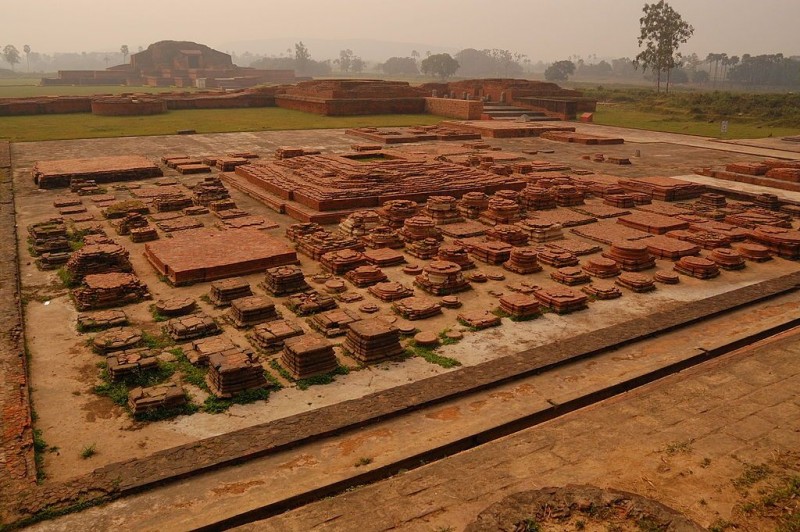
Vikramashila University was established by Dharmapala of Pala dynasty during late 8th century and flourished for 400 years till 12th century. It was located in the Bhagalpur district of modern day Bihar. It gave direct competition to Nalanda University with over 100 teachers and over 1000 students listed in this University. This university was well known for its specialized training on the subject of Tantra (Tantrism).
One of the most popular graduates from this University was Atiśa Dipankara, a founder of the Sharma traditions of Tibetan Buddhism who also revived the Buddhism in Tibet.
Odantapuri University
Odantapuri University was established by Dharmapala of Pala dynasty during late 8th century in Magadha (which is in modern day Bihar) and flourished for 400 years till 12th century. The famous Acharya Sri Ganga who was a professor at the Vikramashila University was a graduate of this Odantapuri University.
According to the ancient Tibetan records there were about 12,000 students studying at this University. Ancient Tibetan texts mention this as one among the five great Universities of its time, the other four being Vikramashila, Nalanda, Somapura and Jagaddala Universities – all located in ancient India.
Somapura University
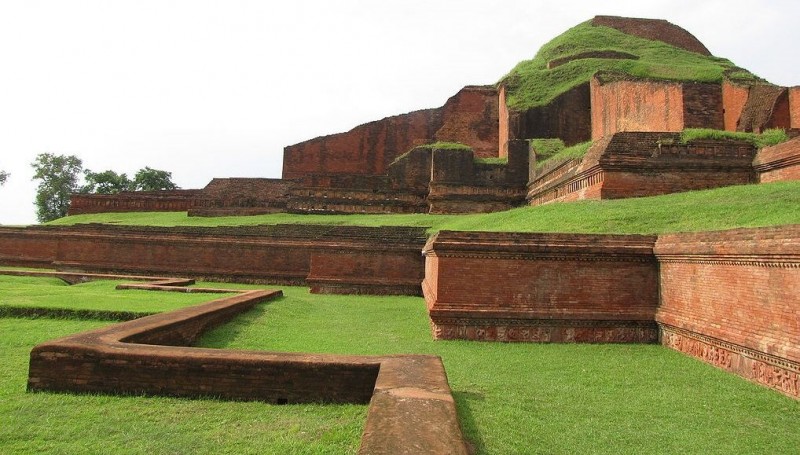
Somapura Mahavihara was established by Dharmapala of Pala dynasty during late 8th century in Bengal and flourished for 400 years till 12th century. The University spread over 27 acres of land of which the main complex was 21 acres was one of the largest of its kind.
It was a major center of learning for Bauddha Dharma (Buddhism), Jina Dharma (Jainism) and Sanatana Dharma (Hinduism). Even today one can find ornamental terracotta on its outer walls depicting the influence of these three traditions.
Telhara University
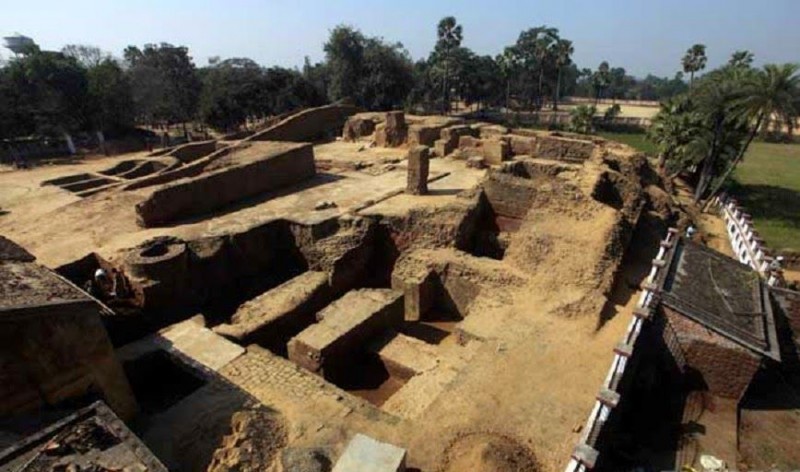
Ruins of Telhara University were found in January 2014 during excavation of a 45-foot high mound. Based on findings archaeologists placed the Telhara University back to first century AD to Kushan Empire. It is said the university was built by one of the descendents of Magadha ruler Bimbisara.
Nalanda University was set on fire by Turkish Muslim army under Bakhtiyar Khilji in 1193. During the excavation work, the team members stumbled upon a 1.5-foot-thick layer of ash, suggesting that Telhara University was also burnt by Khilji on his way.
Other Ancient Universities
The above mentioned list is not a complete list of ancient Indian universities either. Dharmapala of Pala dynasty alone is said to have established 50 mega learning centers across his kingdom, and they have been as huge and as popular as the ones mentioned above. For instance, the Munshiganj Vihara discovered as recently as March 23, 2013 in Bengal is said to have been established in 9th century and was home to 8000 students who came from faraway places like China, Tibet, Nepal and Thailand.
Further centers include Jagaddala, in Bengal (from the Pala period to the Muslim conquest), Nagarjunakonda, in Andhra Pradesh, Sharada Peeth, in modern day Pakistan Administered Kashmir, Varanasi in Uttar Pradesh (8th century to modern times), Kanchipuram, in Tamil Nadu, Manyakheta, in Karnataka.
Destruction of Ancient Indian Universities
As you can see, many of the universities mentioned above came to an end around 12th century. The universities like Nalanda, Vikramashila etc were destroyed around this period during the Muslim invasion of India by the fanatic Bakhtiyar Khilji from Turkey in 1193 CE.
The destruction of these centres of learning at Nalanda and other places across northern India was responsible for the demise of ancient Indian scientific thought in mathematics, astronomy, alchemy, and anatomy.


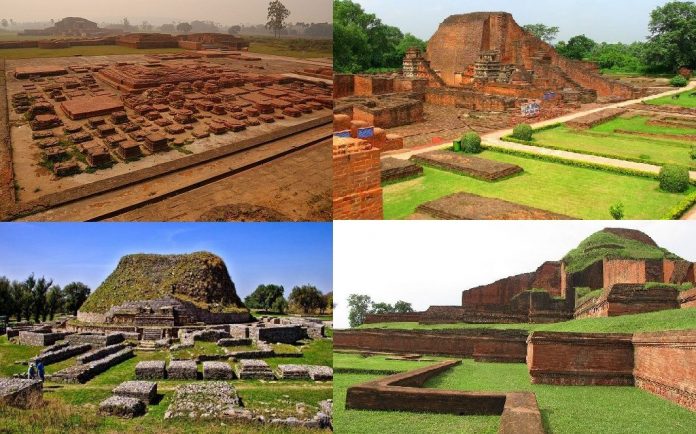

Let us start getting awareness about our past.
Good Article. Would be more good if provided with ref. So that there won’t be debate that these are just stories or propaganda.
Your efforts are most appreciated. Keep it up your work. These universities should be rebuild with same environment focus should be given more to our culture and tradition.